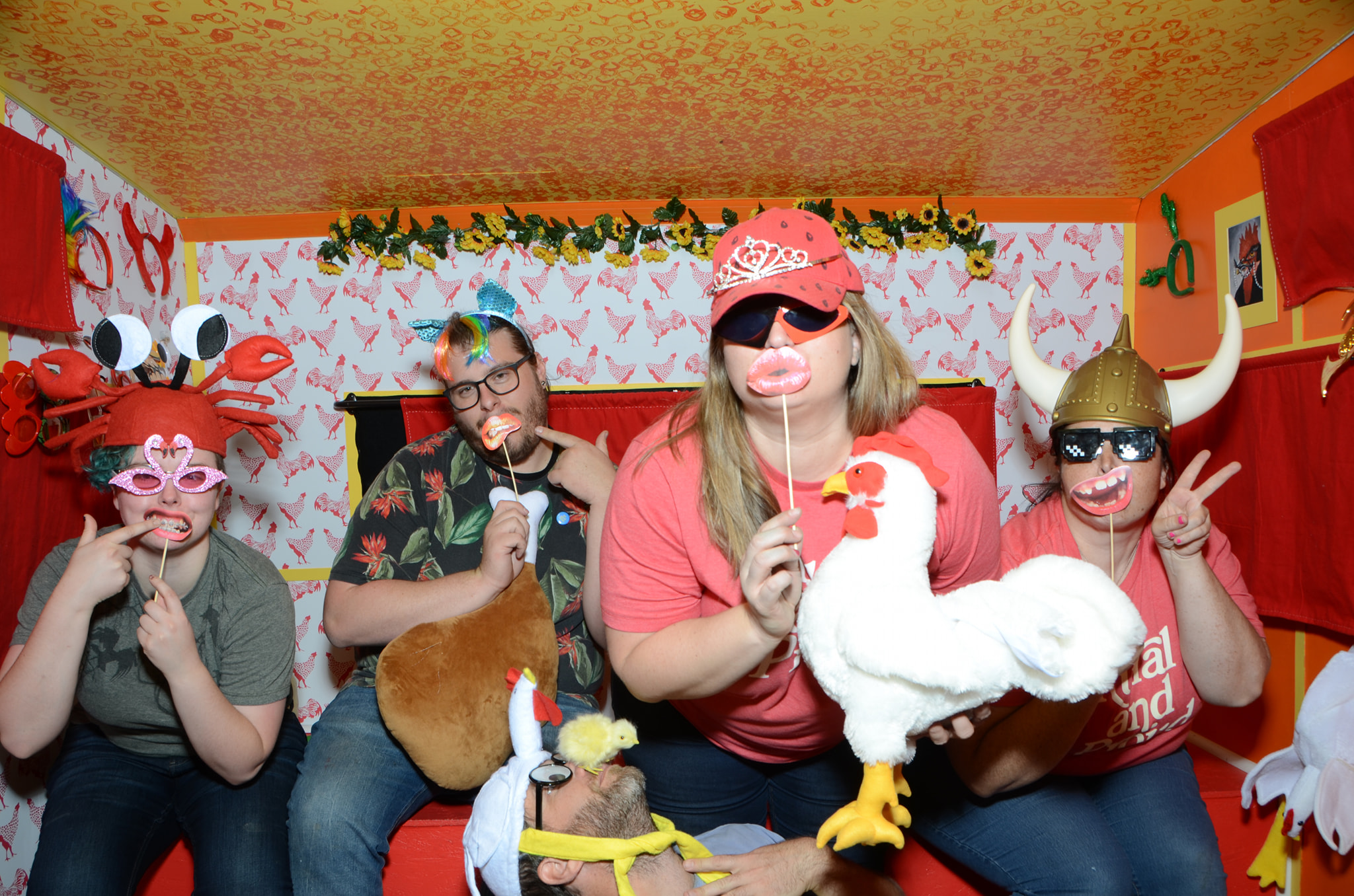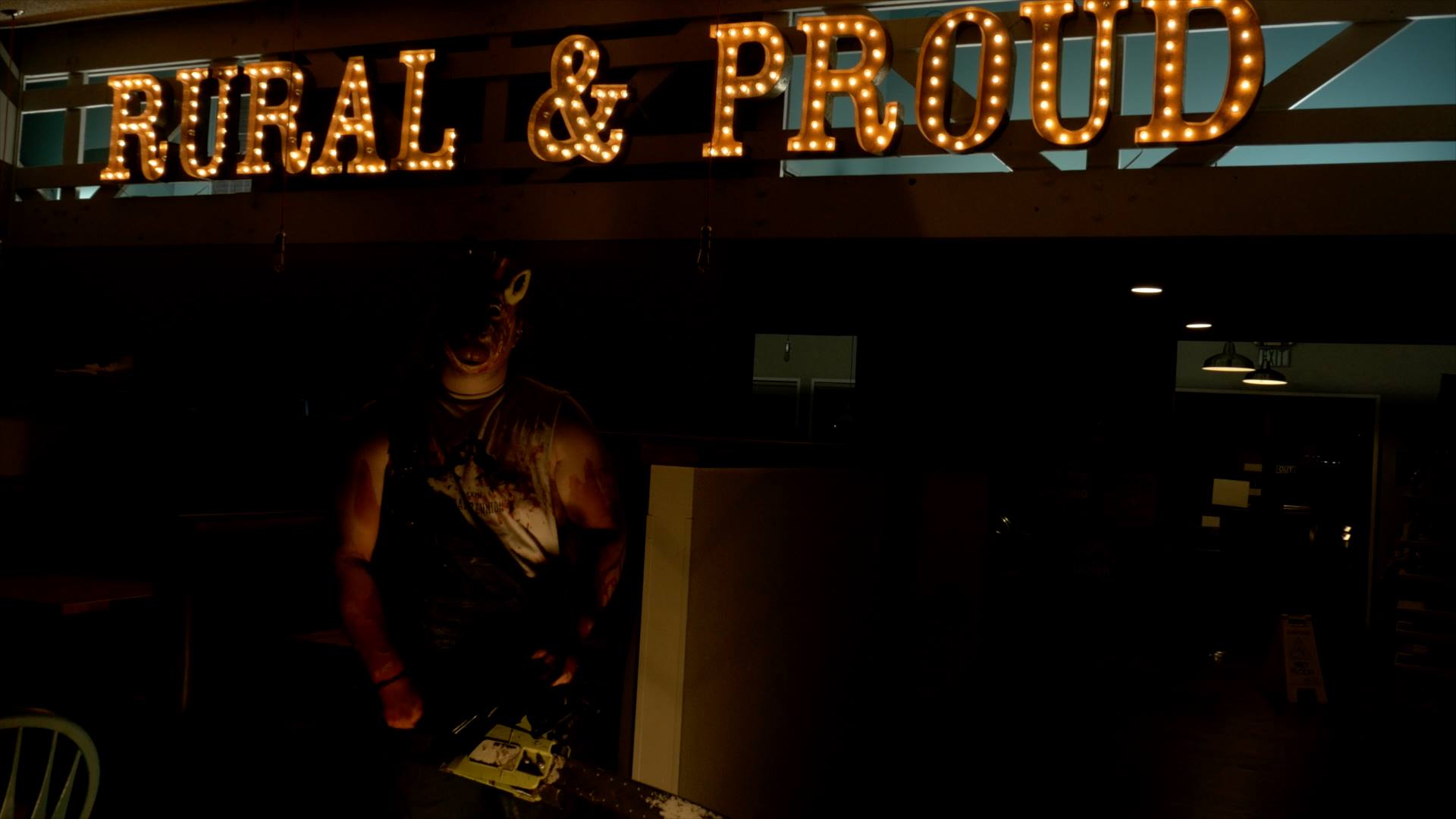
Photo: Melon Days 2019 photo booth. L to R: Ty, Tadd Mecham, Justin Queen, Maria Sykes, Sarah Burnett.
Grace Whatley: Hi Tadd! We’re so excited to safely resume the Frontier Fellowship after a long COVID hiatus, and with you, nonetheless! In a few sentences, can you tell readers a little bit about yourself? Where are you from, what’s your education or what are your important life experiences, and what do you make?
Tadd Mecham: Hello Grace! I grew up from infancy to age 20 in Green River in the same house and worked basically the same jobs until finally making it out of GR and to the big city (which is how I viewed Salt Lake back then). Growing up in a tiny town in the middle of nowhere and realizing that I am gay was definitely a reason for my complete obsession with film. I have always seen it and used it as a way to see a bigger world and to escape my own worries, even for a couple of hours. Film is probably the only reason I was never ashamed to be who I am, growing up in a mormon family, because I had all of the evidence in front of me that I was not alone. This love for movies is the reason I got a degree in Film and Media Arts from the University of Utah and have been scraping together money for ultra cheap film projects (almost exclusively horror) ever since.
GW: Very cool! How did you become familiar with Epicenter, and why did you decide to participate in the Frontier Fellowship?
TM: I have always respected how much the Epicenter contributes to the community. They have moved from being seen as outsiders by a large portion of the town to being embraced by much of the community for the work they do. Epicenter brings life and new faces, and friends, to Green River and I think it’s great. I was kind of terrified to do the fellowship to be honest. I have seen previous Frontier Fellowship work and definitely had my doubts about whether my film would be applicable to the sort of desert-centric beautiful projects that came before it. I have always worked by myself and answered only to myself when it comes to my own art or films, so if what I produce is horrible or embarrassing I can just pretend it never happened. But knowing Epicenter has seen some of my previous work and still asked me to do this definitely helped instill more confidence that what I make isn’t something to be embarrassed about. Having anxiety and making art is always a battle of being absolutely confident about your work one moment then doubting everything about it the next.
GW: What are the primary influences in your work?
TM: Most of the gritty 70s and 80s slasher movies are high on the list, but more specifically the original The Texas Chainsaw Massacre. You can watch that film today, in 2021, and it is still completely terrifying. The set, the costume design and the cinematography are all timeless. I am genuinely surprised by that movie every time I watch it. There are definitely more specific and obscure influences. Francisco Goya’s drawing Here Comes The Bogeyman was something I came across in high school and it is something I think about anytime I am trying to produce anything scary. The figure covered in what looks like a bunched up bedsheet moving toward a mother and her screaming children gets completely under my skin. There have been contemporary influences as well. When I saw It Follows in theaters I left the movie being completely thrilled that I had found a new great horror movie. It wasn’t until later that night, getting a glass of water in the kitchen that I looked out on the empty field next to my apartment complex and imagined a solitary figure moving through the grass directly toward me. When a horror film’s basic premise is something that has you looking over your shoulder long after leaving the theater, that is when you know you’ve seen a great horror film. That is something I could probably only ever hope to achieve. But I think, in all honesty, being shown Pet Semetary at way too young of an age and having nightmares for the following decade about the dying sister in the back bedroom played a huge influence on everything I do, as funny as that sounds.

Photo: Still from Tadd Mecham’s horror film “Green River” (2019).
GW: What is most exciting to you about having this time to focus on your art practice? What are you excited to make, experiment with, or learn about?
TM: I love the idea that anyone can make a movie. There is always an example of a ‘low budget’ film where someone will say with a straight face that it only cost them $50,000 to make. I get excited if I have access to $400 to make a movie. Obviously this type of ultra-low budget filmmaking will negate things like professional actors or a full crew behind the camera, but getting around those challenges is the fun (and sometimes insanely stressful) part of making a movie. I always get excited to strip down a little further than my already bare bones approach. For this project I wanted to see if it was possible to make an entire film using only an iphone. I wanted to see how far we could go not only with video but also with the audio a smartphone is capable of picking up. This will definitely present its own unique set of challenges but that’s what makes it fun. The absolute truth is that you can write a screenplay, call your friends, pick up your cell phone and go out and make a movie. If you want to do it, go out and do it.
GW: When you’re not busy making really cool stuff for the fellowship, what will you be doing in your free time? Despite the global pandemic, Is there anything you’re looking forward to or are really excited about right now?
TM: Hopefully go to a movie theater sometime soon. I miss going to the movies so much. I can’t wait to see The Green Knight, Dune, and Promising Young Woman. The ability to stream new releases in my living room is definitely convenient but a lot less fun. I’m excited to go camping when it gets warm enough and get back into hiking. And of course plenty of gaming.